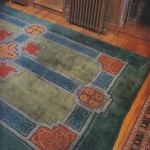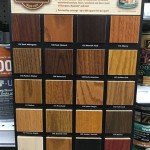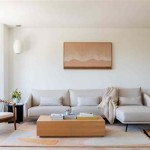Modern Interior Living Room Design Ideas
The living room, often considered the heart of a home, is a space designed for relaxation, entertainment, and connection. Modern interior design emphasizes clean lines, functionality, and a sense of openness. Creating a modern living room that is both aesthetically pleasing and practically comfortable requires careful consideration of layout, color palette, furniture selection, and accessory integration. This article explores several design ideas and key elements involved in crafting a contemporary living room.
A crucial aspect of a modern living room design is understanding the desired atmosphere. Is the goal a minimalist, calming sanctuary, or a vibrant, energetic space for social gatherings? Defining the purpose upfront will guide subsequent design choices. This includes evaluating the room's existing architecture, such as window placements and natural light availability, as well as incorporating personal preferences and lifestyle needs.
Optimizing Space and Layout
Effective space planning is paramount in modern living room design. The layout should promote flow and functionality, avoiding clutter and maximizing usable area. Start by identifying focal points, such as a fireplace, a large window with a view, or a statement piece of art. Arrange furniture around these focal points to create a sense of balance and visual interest.
Consider the traffic patterns within the room. Ensure clear pathways for movement, avoiding obstacles that can disrupt the flow. In smaller living rooms, using multi-functional furniture, such as a sofa bed or a coffee table with storage, can help optimize space. Wall-mounted shelving units can also provide storage without taking up valuable floor space.
Open-concept living spaces are a common feature in modern homes. In these cases, defining the living room area within the larger space is crucial. This can be achieved through the strategic placement of furniture, such as a sectional sofa that visually separates the living area from the dining or kitchen area. Area rugs can also be used to delineate different zones within the open space.
Scale is also a critical factor. Oversized furniture in a small room can make the space feel cramped, while undersized furniture in a large room can appear disproportionate. Choose furniture pieces that are appropriately sized for the room's dimensions. Consider the height and width of each item, as well as its visual weight, to create a harmonious balance.
Selecting a Modern Color Palette
Color plays a significant role in defining the mood and style of a living room. Modern color palettes often feature neutral tones, such as whites, grays, and beiges, as a base. These neutral colors create a calming and sophisticated backdrop that allows furniture and accessories to stand out. However, incorporating pops of color can add visual interest and personality to the space.
Accent colors can be introduced through cushions, throws, artwork, or even a statement wall. Choose colors that complement the neutral base and reflect personal preferences. Popular accent colors in modern living rooms include blues, greens, yellows, and oranges. These colors can add vibrancy and warmth to the space without overwhelming the overall aesthetic.
Monochromatic color schemes, using different shades of a single color, can also create a sophisticated and cohesive look. For example, a living room with varying shades of gray, from light to dark, can create a sense of depth and visual interest. Texture can also be used to add visual interest to a monochromatic scheme, such as using different fabrics and materials in the same color family.
Contrast is another important element to consider when choosing a color palette. Combining light and dark colors can create a dynamic and visually appealing space. For example, pairing a dark sofa with light walls can create a striking contrast that draws the eye. However, it's important to balance the contrast to avoid making the room feel too harsh or overwhelming.
Incorporating Modern Furniture and Materials
Modern furniture is characterized by clean lines, simple silhouettes, and functional design. Choose furniture pieces that reflect these principles and complement the overall style of the living room. Sofas and chairs with sleek profiles and minimalist detailing are common choices in modern living rooms. Materials such as leather, wood, and metal are often used in modern furniture designs.
The choice of materials also contributes to the overall aesthetic of the living room. Natural materials, such as wood, stone, and glass, can add warmth and texture to the space. These materials can be incorporated through furniture, flooring, and accessories. Metal accents, such as stainless steel or brass, can add a touch of sophistication and elegance.
Textiles play a crucial role in adding comfort and visual interest to a modern living room. Choose fabrics that are both durable and aesthetically pleasing. Natural fibers, such as linen and cotton, are popular choices for upholstery and curtains. Texture can also be added through cushions, throws, and rugs. Consider using different textures to create a sense of depth and visual contrast.
Lighting is an essential element of modern living room design. Natural light should be maximized by keeping windows clear and using sheer curtains or blinds. Artificial lighting should be layered to create a warm and inviting atmosphere. This can include ambient lighting, such as recessed lights or a chandelier, as well as task lighting, such as reading lamps or spotlights.
Consider incorporating smart home technology into the lighting design. Dimmable lights can be used to create different moods and atmospheres, while smart bulbs can be controlled remotely through a smartphone or voice assistant. This allows for greater flexibility and control over the lighting in the living room.
Adding Personality Through Accessories and Art
Accessories and art are essential for adding personality and character to a modern living room. Choose pieces that reflect personal interests and complement the overall style of the space. Artwork, such as paintings, sculptures, or photographs, can be used to create a focal point and add visual interest. Select pieces that resonate with personal taste and complement the color palette of the room.
Plants can also add life and vibrancy to a modern living room. Choose plants that thrive in the available light and complement the overall aesthetic. Greenery can be incorporated through potted plants, hanging baskets, or even a living wall. Plants not only add visual appeal but also improve air quality and create a more relaxing atmosphere.
Decorative objects, such as vases, candles, and books, can be used to add texture and visual interest to shelves and coffee tables. Arrange these objects in groupings to create a sense of balance and harmony. Consider using objects of different heights and sizes to create visual interest.
Mirrors can be used to enhance the sense of space and light in a living room. Place mirrors strategically to reflect natural light and create the illusion of a larger room. Mirrors can also be used to highlight architectural features or artwork. Choose mirrors with simple frames that complement the overall style of the living room.
Rugs are an important element for defining the seating area and adding warmth. Select a rug that complements the color palette and furniture style. Choose a rug that is large enough to anchor the furniture and create a cohesive look. Consider the texture and pile height of the rug to ensure it is comfortable and durable.
Creating a Functional and Comfortable Space
Ultimately, a modern living room should be both functional and comfortable. The design should support the activities that take place in the room, whether it's relaxing, entertaining, or working. Choose furniture and accessories that are both aesthetically pleasing and practical.
Consider the ergonomics of the furniture. Sofas and chairs should be comfortable to sit in for extended periods of time. Ensure that coffee tables and side tables are at a convenient height for placing drinks and snacks. Lighting should be adequate for reading and other tasks.
Storage is also an important consideration. Modern living rooms should be clutter-free and organized. Incorporate storage solutions, such as shelving units, cabinets, and storage benches, to keep the space tidy. Choose storage solutions that are both functional and aesthetically pleasing.
Soundproofing can also contribute to the overall comfort of the living room. Consider using sound-absorbing materials, such as thick curtains or acoustic panels, to reduce noise levels. This can create a more relaxing and peaceful environment. Adding a rug also helps to dampen sound and reduce echoes.
By carefully considering these design ideas and key elements, it is possible to create a modern living room that is both aesthetically pleasing and functionally comfortable. The key is to balance style with practicality and create a space that reflects personal tastes and meets individual needs.

30 Latest Living Room Designs With Pictures In 2024 Design Modern Interior

23 Astounding Contemporary Living Room Ideas Luxury Design

50 Style Modern Living Room Ideas To Try In 2024

Contemporary Living Room Ideas On A Budget Design Cafe

Modern And Luxurious Living Room Interior Design Ideas

Stunning Modern Living Room Interior Design Ideas In

Living Room Design Ideas To Create Your Dream Space

10 Must Try Modern Living Room Design Ideas
Contemporary Living Room Design Timeless And Iconic

50 Style Modern Living Room Ideas To Try In 2024
Related Posts








